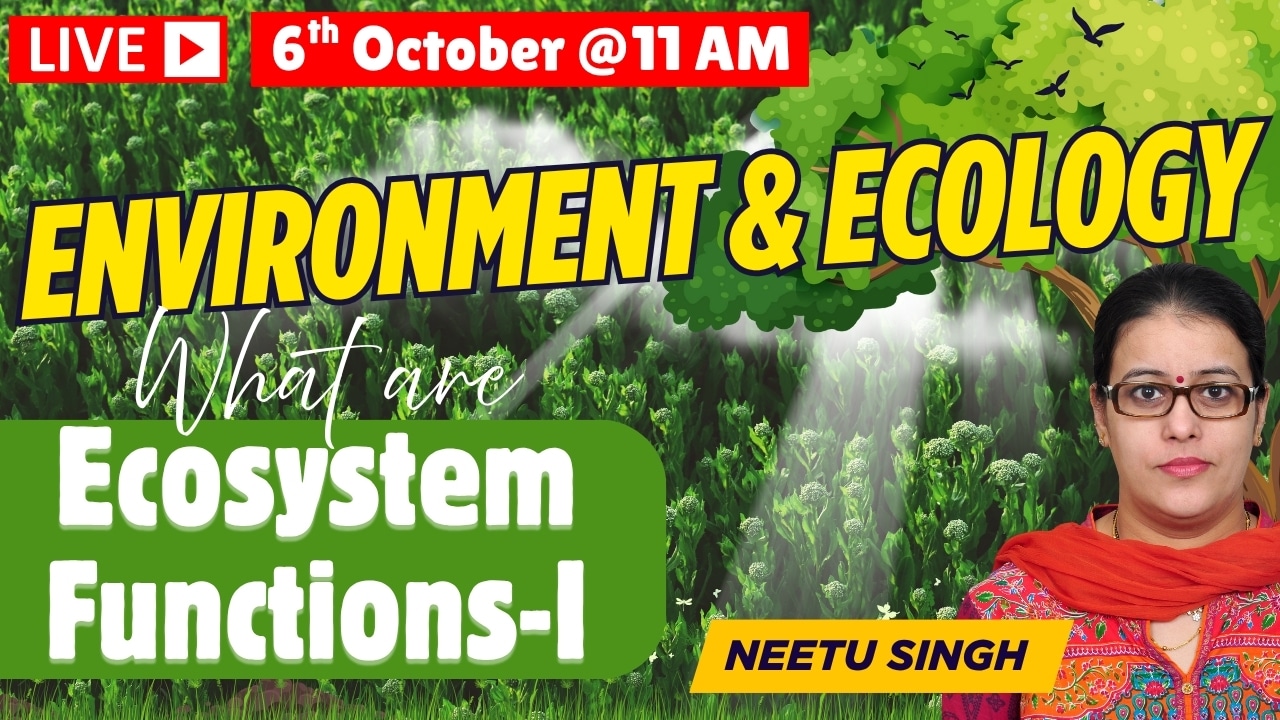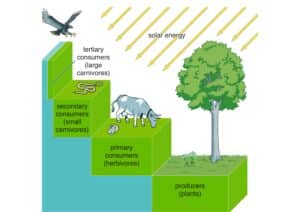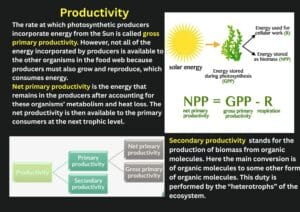
Photosynthetic and Chemosynthetic organisms
Photosynthetic and chemosynthetic organisms are autotrophs, which are organisms capable of synthesizing their own food (more specifically, capable of using inorganic carbon as a carbon source).
Photosynthetic autotrophs (photoautotrophs) use sunlight as an energy source, and chemosynthetic autotrophs (chemoautotrophs) use inorganic molecules as an energy source. Autotrophs are critical for ecosystems because they occupy the trophic level containing producers. Without these organisms, energy would not be available to other living organisms, and life would not be possible.
Photoautotrophs, such as plants, algae, and photosynthetic bacteria, are the energy source for a majority of the world’s ecosystems.

Photoautotrophs harness the Sun’s solar energy by converting it to chemical energy.

Chemoautotrophs are primarily bacteria and archaea that are found in rare ecosystems where sunlight is not available, such as those associated with dark caves or hydrothermal vents at the bottom of the ocean . Many chemoautotrophs in hydrothermal vents use hydrogen sulfide (H2S), which is released from the vents, as a source of chemical energy. This allows them to synthesize complex organic molecules, such as glucose, for their own energy and, in turn, supplies energy to the rest of the ecosystem.The feeding positions in a food chain or web are called trophic levels. The different trophic levels are defined in the Table below. Examples are also given in the table. All food chains and webs have at least two or three trophic levels. Generally, there are a maximum of four trophic levels.
Many consumers feed at more than one trophic level. Humans, for example, are primary consumers when they eat plants such as vegetables. They are secondary consumers when they eat cows. They are tertiary consumers when they eat salmon.
Trophic Levels
The feeding positions in a food chain or web are called trophic levels. The different trophic levels are defined in the Table below. Examples are also given in the table. All food chains and webs have at least two or three trophic levels. Generally, there are a maximum of four trophic levels. Many consumers feed at more than one trophic level. Humans, for example, are primary consumers when they eat plants such as vegetables. They are secondary consumers when they eat cows. They are tertiary consumers when they eat salmon.
Go Back